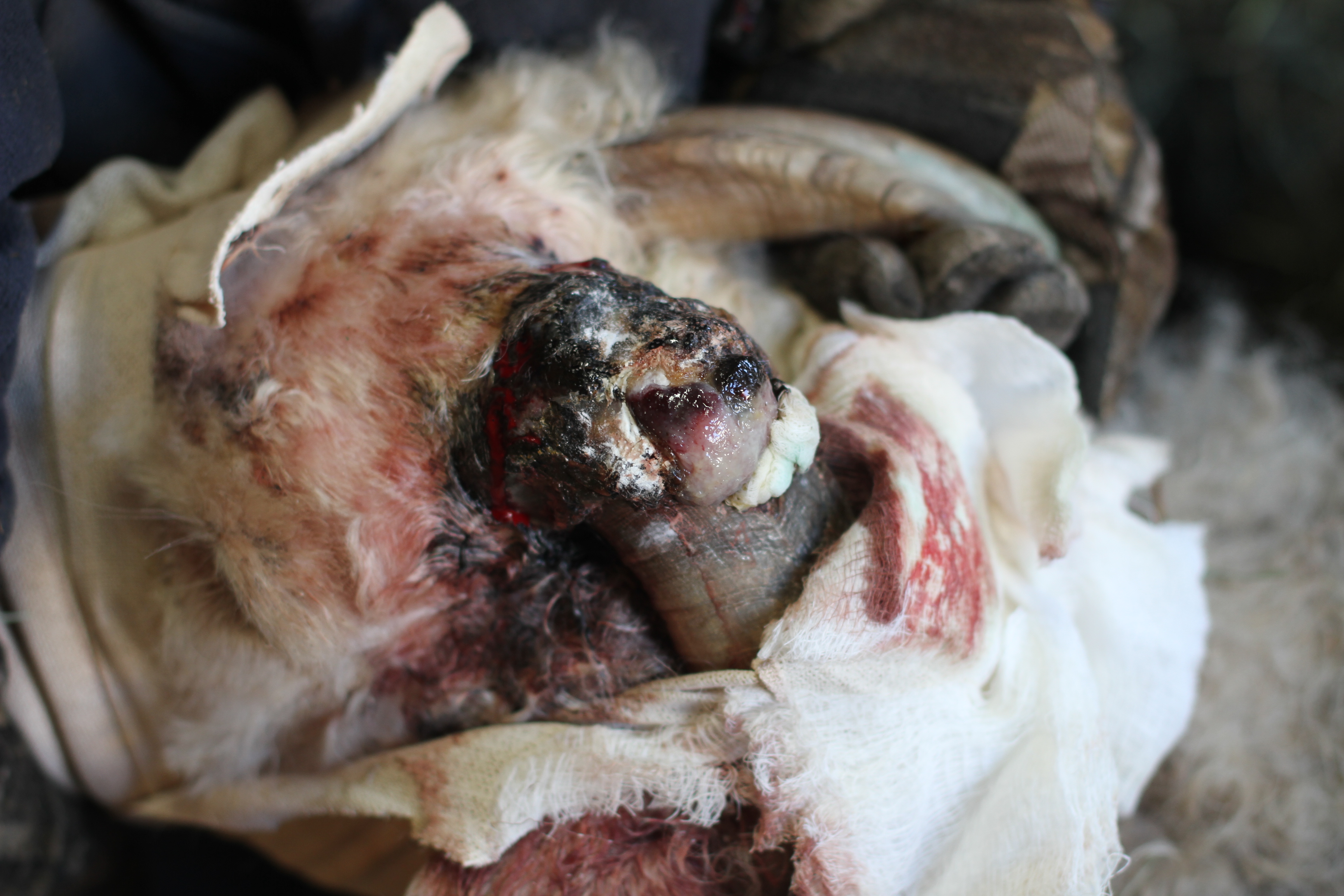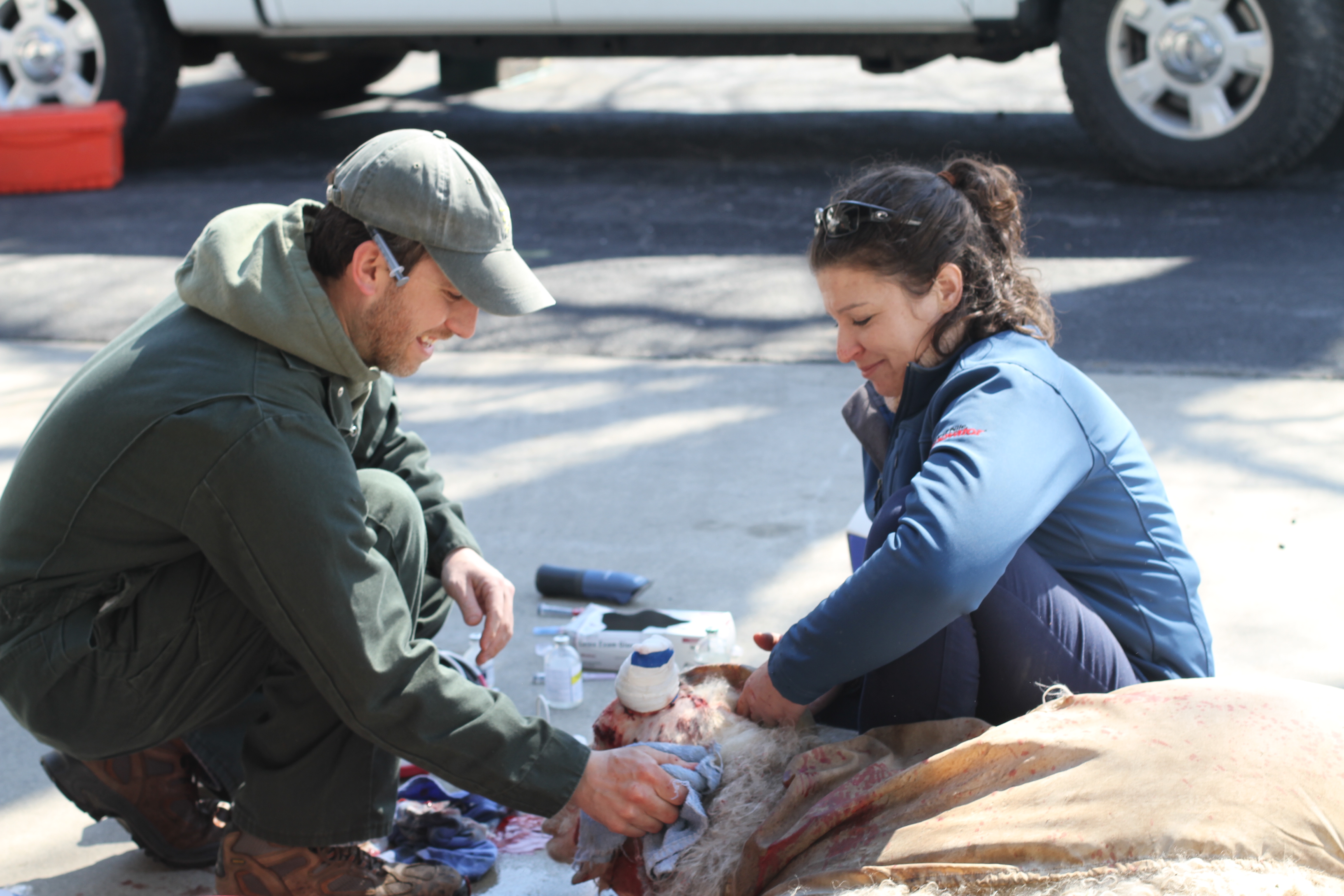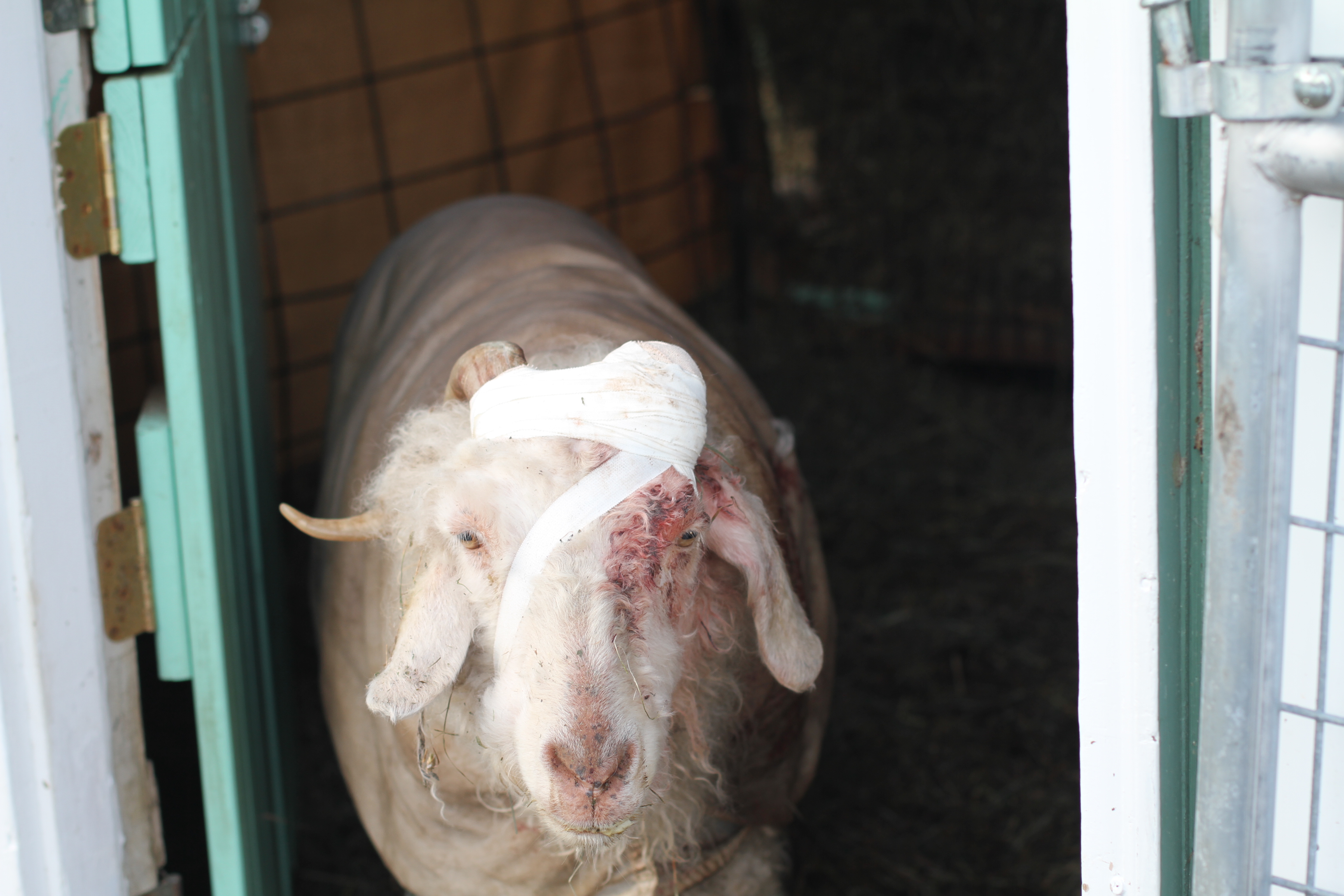Reader warning: photos show blood/ skulls and the text discusses medical details.
Mid February 2015, Roberto broke his left horn whacking the hay feeder. Whacking the hay feeder was one of Roberto’s greatest pleasures in life and he could often be heard throughout the night giving it an adjustment so that he could reach the most tasty hay morsels. He also constantly whacked the side of the barn and the doors, so that I couldn’t keep a coat of paint on any object he could reach. I can only explain the need to whack as “it’s a goat thing”.
The fracture was small and clean so I opted to leave it alone since chances were good that it would heal on it’s own. In 10 days it wasn’t bothering him anymore but he broke it again. The break was larger but still looked like it would heal without intervention. But as a goat must do, Roberto began whacking the hay feeder again since the horn was no longer bothering him. This time he made a real mess of it and I knew it was going to have to be removed. Roberto was 9 years old so a horn removal at his age was going to be a major, messy job.
Goat owners often remove horns from newborn kids by burning the horn buds off their heads which keeps the horns from growing. It’s extremely painful, which is why goat producers normally do this within a day or two of birth, before the nervous system is completely wired and thus the kid is not completely aware of the pain. If you remove the horn, immediately below it is the sinuses and the brain, no skull to protect them. Interestingly for cows, if a horn is removed it is normally left open to the elements to heal.
There are several fairly large blood vessels in the horn as well, so removal involves a fair amount of blood loss unless it is cauterized, which is why burning is often used to close off the vessels. Needless to say, this is not a procedure I would ever do without sedation and/or pain blocking medicine.
Despite having two great vets come out to the farm to do the horn removal, I was uneasy in advance of the operation. Thankfully, the procedure went very well with the vets putting him out and then applying the equivalent of Novocaine at strategic nerves around his head and horn. Roberto lost a fair amount of blood but not enough to need a transfusion. Once his horn was bandaged and he was given a shot for any after the fact pain, he was given a shot to awaken him. After about 10 minutes he was up and we were able to help him back up to the barn for some rest.
Roberto was a bit groggy (as any one having surgery would have been) the rest of the day but was alert and eating, nearly his old self by evening. This was March 9, 2015. The photo above shows Roberto with his new bandage the day after his operation. The plan was to keep the bandage on for a couple of weeks so that it could completely heal before exposing it to all the hay and dirt that comes with living outside.
The bandage was removed successfully after 2 weeks but I didn’t like the looks of the wound. I emailed pictures to his main vet and she thought it looked as good as could be expected. I kept changing the bandages regularly and it was a cool Spring so there were no issues with flies attacking the wound. Full recovery for this procedure is typically 6 weeks.
On April 28th 2015, I noticed Roberto running around the pasture shaking his head continually with blood flying everywhere. Flies were being attracted to the wound so I got him into the garage (the only totally enclosed, fly free area readily available) and after 40 minutes finally got the bleeding stopped. I called the vet and she was able to make a visit within the hour. After a quick exam and a discussion we decided to put him down. After he was gone we explored the wound and found that a scalpel could cut right through the skull. Roberto most likely had osteoscarcoma which is why the horn broke. Ending his suffering was what needed to be done.
After 6 months composting (the best method for handling livestock losses), I dug out his skull and found a fairly large hole in his skull right above his left eye socket. Normally the bone is a bit thinner in that area (see photo of right side for comparison) but there should not have been a hole completely through the skull. This helped me feel better about the tough decision to let him go.
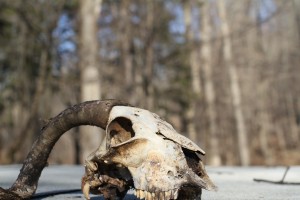
Right Side of Roberto’s Skull
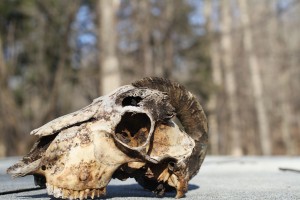
Left Side of Roberto’s Skull
Roberto was a gentle giant with gorgeous fiber who is greatly missed. He always looked out for his twin sister, Ingrid, who was much smaller than him. Roberto is also the goat pictured on my original blog’s home page. My learning for the future is to question why a horn would have broken in an adult goat with no prior history of illness or injury to the horn.

